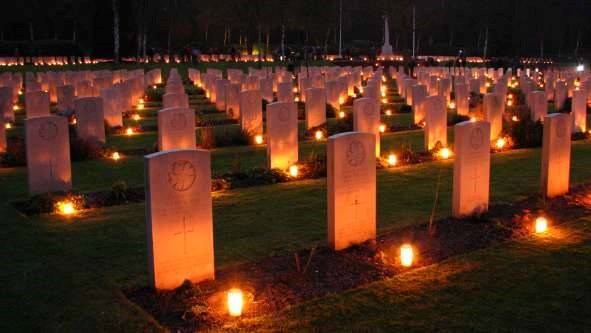 Gerry Van Holt died this week, way off in the Netherlands. Mike Muntain thinks the Dutchman is a Canadian hero.
Gerry Van Holt died this week, way off in the Netherlands. Mike Muntain thinks the Dutchman is a Canadian hero.
It’s certain that Van Holt is responsible, in part, for keeping alive the memory of a bunch of Vancouver Island boys buried at a Second World War cemetery in Holland.
Just a small lad himself when Canadian troops liberated his country in 1945, Van Holt devoted much of his life to honouring them.
He’s the one behind the annual Christmas Eve ceremony at which Dutch schoolchildren place candles at the graves of the 1,355 Canadians buried at Holten.
He drove fundraising for the visitors centre there.
He was the one who linked up with Muntain for the A Face for Every Name project, in which they set out to attach a photo and biographical information to every grave at the cemetery.
Muntain, a Nanaimo-raised military researcher in Kingston, Ont., used media across Canada to solicit information on the buried soldiers, most of whom died in the final weeks of the war. In May, he reached out to the Times Colonist to look for background on 11 Victoria and Duncan men.
It worked. “The Island was a treasure trove,” Muntain says.
Muntain learned of two Duncan brothers-in-law, Anthony Compton-Lundie, killed when his Canadian Scottish company’s headquarters was shelled April 21, 1945, and Jim Else, who died May 1 of that year when his vehicle drove over a landmine in Germany.
“My grandmother lost her husband and her brother within 10 days of each other at the end of the war,” said Cobble Hill’s Jim Else, who shares his grandfather’s name.
Esquimalt’s volunteer municipal archivist, Sherri Robinson, was able to tell Muntain about James L. Auchterlonie, an Esquimalt High grad who was initially rejected by the army because of a medical condition but kept trying to enlist until they took him. Auchterlonie’s sister, Marg Weber, still has a strong emotional attachment to her big brother, still keeps his letters, some of which arrived after the 20-year-old’s death on April 13, 1945.
The TC piece even led to the story of a Maritimer buried at Holten. Royal Roads University’s Shelley Langille sent background on her grandfather, Nova Scotian Ira Langille, who left behind a wife and four children when he was killed April 28, just a couple of days before his 33rd birthday. Imagine his wife, newly widowed just as the rest of the country was swept up in end-of-the-war elation. She’s still alive today, 98 years old.
And on and on it went, families eager to let it be known that there was more to the men buried in those long ranks of identical graves than the names and dates on their headstones.
When the A Face for Every Name project began in January, Muntain and Van Holt had photos of perhaps 300 of those buried at Holten and knew the background of almost none of them. Now, there are photos to place at more than 700 of the graves, along with close to 900 life stories.
The Vancouver Island connection doesn’t end with the photos and biographies. The City of Nanaimo is providing the Canadian flags and lapel pins that will go to the Holten children lighting candles at the cemetery this Christmas.
Next May, when Holland marks its remembrance day, members of the Victoria Children’s Choir will join Dutch kids in placing flowers at the Holten graves. The choristers will sing there, too, in the presence of Holland’s Princess Margriet, who was born in Ottawa during the war. The choir is raising funds, hoping to send 30 children on a two-week trip commemorating the 70th anniversary of the Netherlands’ liberation. Canada’s Governor General is expected to be at Holten, too.
Absent will be Van Holt, who was in his mid-70s when he died this week. “He was so looking forward to that May ceremony,” says Muntain, who thinks his Dutch friend deserves recognition from the Canadian government.
As for Muntain himself, he has found the project to be its own reward. “It’s been an emotional roller-coaster, but it has been the biggest privilege of my life.”



